Grow Iceberg Lettuce Easily, even if you think you have a brown thumb! Have you ever dreamed of biting into a crisp, refreshing wedge of iceberg lettuce, grown right in your own backyard? It’s more achievable than you might think, and this DIY guide is packed with secrets to help you succeed. Forget those limp, expensive heads from the grocery store – imagine the satisfaction of harvesting your own fresh, vibrant lettuce.
Lettuce cultivation has a rich history, dating back to ancient Egypt where it was initially grown for its seeds and oil. Over time, the leafy varieties we know and love today emerged, becoming a staple in cuisines worldwide. While iceberg lettuce might not have the same ancient roots as other varieties, its crisp texture and mild flavor have made it a beloved choice for salads and sandwiches for decades.
But why should you bother learning to grow iceberg lettuce easily at home? Well, for starters, homegrown lettuce tastes infinitely better! Plus, you’ll know exactly what’s gone into growing it, avoiding harmful pesticides and chemicals. This DIY guide will walk you through every step, from choosing the right seeds to harvesting your bounty. I’ll share my favorite tricks and hacks to ensure a successful harvest, even if you’re a complete beginner. Get ready to enjoy fresh, delicious iceberg lettuce all season long!
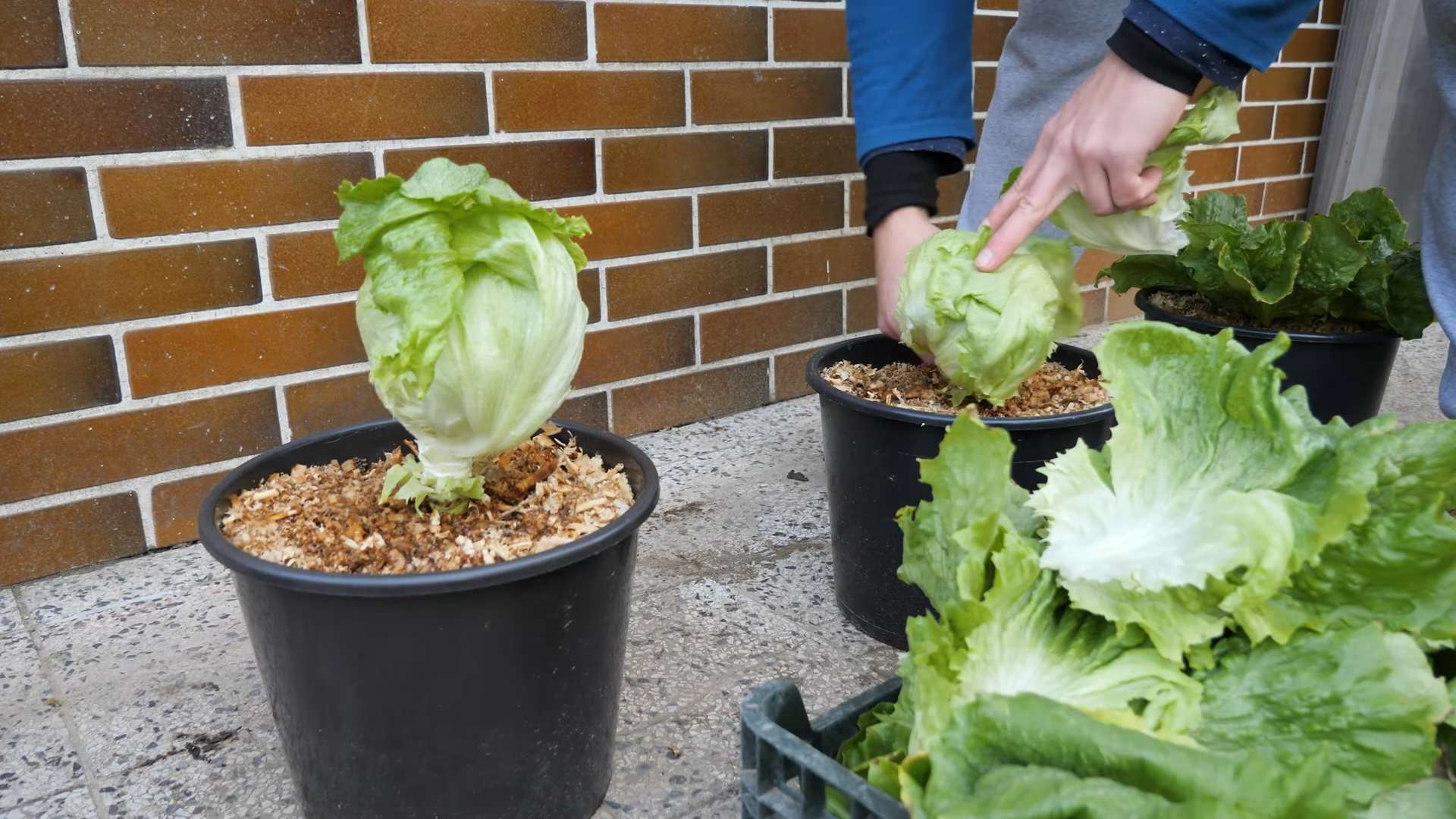
Grow Your Own Crisp Iceberg Lettuce: A DIY Guide
Hey there, fellow garden enthusiasts! I’m so excited to share my tried-and-true method for growing crisp, delicious iceberg lettuce right in your own backyard (or even on your balcony!). Forget those flimsy, overpriced heads at the grocery store – with a little patience and these simple steps, you’ll be enjoying fresh, homegrown lettuce in no time.
Getting Started: Planning and Preparation
Before we dive into the nitty-gritty, let’s lay the groundwork for success. Choosing the right location and preparing your soil are crucial for healthy, happy lettuce plants.
* Sunlight: Iceberg lettuce needs at least 6 hours of sunlight per day. Choose a spot in your garden that gets plenty of sunshine, especially in the morning. Afternoon shade can be beneficial in hotter climates to prevent bolting (more on that later!).
* Soil: Lettuce thrives in well-drained, fertile soil. Amend your soil with compost or well-rotted manure to improve its structure and nutrient content. A slightly acidic to neutral pH (around 6.0 to 7.0) is ideal.
* Timing: Iceberg lettuce is a cool-season crop, meaning it prefers cooler temperatures. The best time to plant is in early spring or late summer/early fall. Avoid planting during the hottest months of the year, as high temperatures can cause the lettuce to bolt (go to seed), resulting in bitter-tasting leaves.
* Starting Seeds Indoors (Optional): While you can direct sow lettuce seeds, starting them indoors gives you a head start, especially if you have a short growing season.
Step-by-Step Instructions: From Seed to Salad
Alright, let’s get our hands dirty! Here’s a detailed guide to growing iceberg lettuce, from planting the seeds to harvesting your own crisp heads.
1. Starting Seeds Indoors (If Applicable)
If you’re opting to start your seeds indoors, follow these steps:
1. Gather Your Supplies: You’ll need seed starting trays or small pots, seed starting mix, iceberg lettuce seeds, a spray bottle, and a grow light (optional, but highly recommended).
2. Fill the Trays/Pots: Fill your seed starting trays or pots with seed starting mix, leaving about half an inch of space at the top. Gently tap the trays to settle the mix.
3. Sow the Seeds: Sprinkle 2-3 lettuce seeds into each cell or pot. Cover the seeds with a very thin layer of seed starting mix (about 1/4 inch). Lettuce seeds need light to germinate, so don’t bury them too deep.
4. Water Gently: Use a spray bottle to gently moisten the soil. Avoid overwatering, as this can lead to damping off (a fungal disease that can kill seedlings).
5. Provide Light and Warmth: Place the trays or pots in a warm location (around 60-70°F) and provide plenty of light. A grow light is ideal, but a sunny windowsill can also work. If using a windowsill, rotate the trays regularly to ensure even growth.
6. Keep the Soil Moist: Check the soil moisture daily and water as needed to keep it consistently moist, but not soggy.
7. Thin the Seedlings: Once the seedlings have developed their first true leaves (the second set of leaves), thin them to one seedling per cell or pot. Use small scissors to snip off the weaker seedlings at the soil line.
8. Harden Off the Seedlings: About a week before you plan to transplant the seedlings outdoors, begin hardening them off. This process gradually acclimates the seedlings to outdoor conditions. Start by placing the trays or pots outdoors in a sheltered location for a few hours each day, gradually increasing the amount of time they spend outside.
2. Direct Sowing Seeds Outdoors
If you’re direct sowing your lettuce seeds, follow these steps:
1. Prepare the Soil: Rake the soil to create a smooth, even surface. Remove any rocks, weeds, or debris.
2. Create Shallow Furrows: Use a hoe or your finger to create shallow furrows in the soil, about 1/4 inch deep and 12 inches apart.
3. Sow the Seeds: Sprinkle the lettuce seeds evenly along the furrows.
4. Cover the Seeds: Gently cover the seeds with a thin layer of soil (about 1/4 inch).
5. Water Gently: Use a watering can with a gentle rose attachment to water the soil thoroughly.
6. Keep the Soil Moist: Keep the soil consistently moist until the seeds germinate.
7. Thin the Seedlings: Once the seedlings have developed their first true leaves, thin them to about 12 inches apart.
3. Transplanting Seedlings Outdoors
If you started your seeds indoors, follow these steps to transplant them outdoors:
1. Prepare the Planting Area: Dig holes in the soil, spaced about 12 inches apart. The holes should be slightly larger than the root balls of the seedlings.
2. Carefully Remove the Seedlings: Gently remove the seedlings from their trays or pots, being careful not to damage the roots.
3. Plant the Seedlings: Place the seedlings in the holes and backfill with soil. Gently firm the soil around the base of the plants.
4. Water Thoroughly: Water the seedlings thoroughly after planting.
5. Mulch (Optional): Apply a layer of mulch around the plants to help retain moisture and suppress weeds. Straw, shredded leaves, or wood chips are all good options.
4. Caring for Your Lettuce Plants
Once your lettuce plants are in the ground, it’s important to provide them with the care they need to thrive.
1. Watering: Water your lettuce plants regularly, especially during dry periods. Lettuce needs consistent moisture to grow properly. Aim to keep the soil consistently moist, but not soggy. Water deeply and less frequently, rather than shallowly and often.
2. Fertilizing: Lettuce is a relatively light feeder, but it can benefit from occasional fertilization. Use a balanced fertilizer or a fertilizer specifically formulated for leafy greens. Follow the instructions on the fertilizer package. I like to use a liquid seaweed fertilizer diluted in water every couple of weeks.
3. Weeding: Keep the area around your lettuce plants free of weeds. Weeds compete with lettuce for water and nutrients. Hand-pull weeds carefully to avoid disturbing the lettuce roots.
4. Pest Control: Lettuce can be susceptible to pests such as aphids, slugs, and snails. Inspect your plants regularly for signs of pests.
* Aphids: Spray aphids with a strong stream of water or use insecticidal soap.
* Slugs and Snails: Hand-pick slugs and snails or use slug bait. You can also create barriers around your plants using copper tape or diatomaceous earth.
5. Bolting Prevention: As mentioned earlier, bolting is a common problem with iceberg lettuce, especially in hot weather. To prevent bolting:
* Plant at the Right Time: Avoid planting during the hottest months of the year.
* Provide Shade: If you live in a hot climate, provide your lettuce plants with afternoon shade. You can use shade cloth or plant them near taller plants that will provide some protection from the sun.
* Water Regularly: Consistent moisture can help prevent bolting.
* Choose Bolt-Resistant Varieties: Some iceberg lettuce varieties are more resistant to bolting than others. Look for varieties that are specifically bred for hot weather.
5. Harvesting Your Iceberg Lettuce
The moment we’ve all been waiting for! Harvesting your own homegrown iceberg lettuce is incredibly rewarding.
1. Timing: Iceberg lettuce is typically ready to harvest about 70-80 days after planting. The head should be firm and compact.
2. Harvesting: To harvest, use a sharp knife to cut the head of lettuce at the base of the plant.
3. Storage: Store your harvested lettuce in the refrigerator. To keep it fresh for longer, wrap it in a damp paper towel and place it in a plastic bag.
Troubleshooting: Common Problems and Solutions
Even with the best planning, you might encounter some challenges along the way. Here are some common problems and how to address them:
* Lettuce Not Forming Heads: This can be caused by several factors, including insufficient sunlight, poor soil, or hot weather. Make sure your lettuce plants are getting enough sunlight, amend your soil with compost, and provide shade during hot weather.
* Lettuce Bolting: As discussed earlier, bolting is caused by high temperatures. Follow the tips above to prevent bolting.
* Yellowing Leaves: Yellowing leaves can be a sign of nutrient deficiency or overwatering. Check the soil moisture and fertilize your plants if necessary.
* Pest Infestations: Regularly inspect your plants for pests
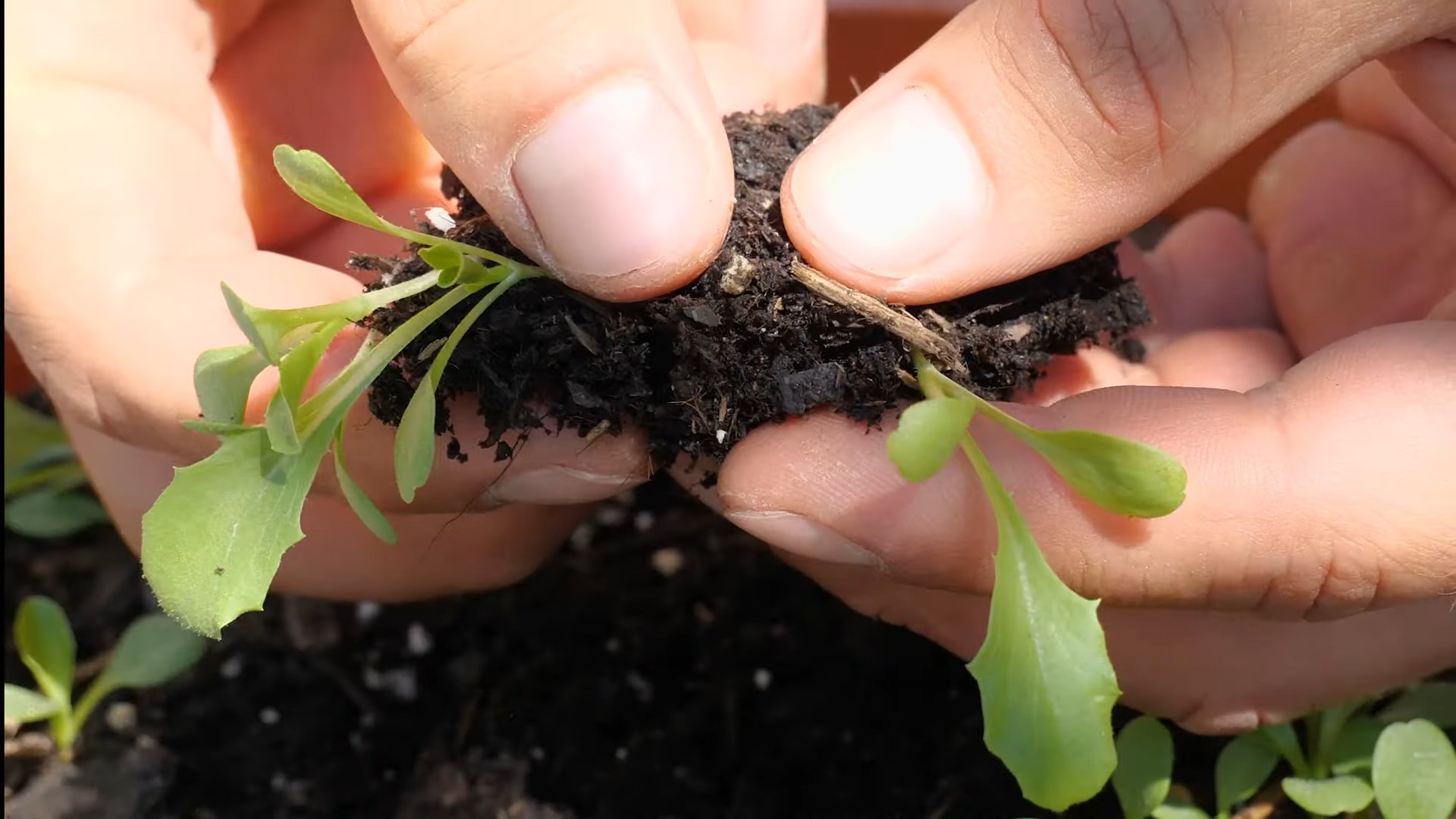
Conclusion
So, there you have it! Growing your own iceberg lettuce doesn’t have to be a daunting task reserved for seasoned gardeners. With this simple DIY trick, you can bypass the common pitfalls and enjoy crisp, refreshing lettuce straight from your backyard, balcony, or even a sunny windowsill. The beauty of this method lies in its accessibility and adaptability. It’s perfect for beginners who might be intimidated by traditional gardening, and it offers a satisfying project for experienced gardeners looking for a quick and rewarding harvest.
Why is this DIY trick a must-try? Because it significantly increases your chances of success. Starting iceberg lettuce from seed can be tricky, with germination rates often being unpredictable. This method, however, gives your seedlings a head start, protecting them from harsh weather conditions, pests, and diseases during their vulnerable early stages. You’ll witness faster growth, healthier plants, and ultimately, a more abundant yield of delicious iceberg lettuce.
Beyond the basic method, there’s plenty of room for experimentation and personalization. Consider using different types of containers, from repurposed plastic tubs to aesthetically pleasing terracotta pots. You can also adjust the soil mix to suit your specific climate and growing conditions. For example, if you live in a particularly hot area, adding more moisture-retentive materials like coco coir or vermiculite to your soil can help prevent the lettuce from bolting (going to seed prematurely).
Furthermore, don’t limit yourself to just iceberg lettuce! This DIY trick works wonders for other leafy greens as well, such as romaine lettuce, butter lettuce, and even spinach. You can create a diverse and vibrant salad garden with minimal effort. Think of the possibilities: fresh, organic salads bursting with flavor, all grown with your own two hands.
We truly believe that this method will revolutionize the way you grow iceberg lettuce. It’s a game-changer that simplifies the process and makes it accessible to everyone. But don’t just take our word for it – try it yourself! We’re confident that you’ll be amazed by the results.
We encourage you to embark on this exciting gardening adventure and discover the joy of harvesting your own fresh, homegrown iceberg lettuce. Once you’ve tried this DIY trick, we’d love to hear about your experience. Share your photos, tips, and any variations you’ve discovered in the comments section below. Let’s create a community of thriving lettuce growers and inspire others to embrace the rewarding world of home gardening. Happy growing!
Frequently Asked Questions (FAQ)
What kind of soil should I use for growing iceberg lettuce?
The best soil for iceberg lettuce is a well-draining, nutrient-rich potting mix. Look for a mix that contains a good balance of peat moss, perlite, and vermiculite. You can also amend your soil with compost or aged manure to provide additional nutrients. Avoid using heavy clay soils, as they can retain too much moisture and lead to root rot. A slightly acidic to neutral pH (around 6.0 to 7.0) is ideal for iceberg lettuce.
How much sunlight does iceberg lettuce need?
Iceberg lettuce thrives in full sun, which means at least 6 hours of direct sunlight per day. However, in hotter climates, it can benefit from some afternoon shade to prevent bolting. If you’re growing your lettuce indoors, place it near a sunny window or use grow lights to provide adequate illumination. Insufficient sunlight can result in leggy, weak plants.
How often should I water my iceberg lettuce?
Water your iceberg lettuce regularly, keeping the soil consistently moist but not waterlogged. Check the soil moisture level daily, especially during hot weather. Water deeply at the base of the plant, avoiding wetting the leaves, which can increase the risk of fungal diseases. A good rule of thumb is to water when the top inch of soil feels dry to the touch.
How do I prevent iceberg lettuce from bolting?
Bolting, or premature flowering, is a common problem with iceberg lettuce, especially in hot weather. To prevent bolting, choose bolt-resistant varieties, provide afternoon shade, and water regularly to keep the soil cool and moist. You can also mulch around the plants to help retain moisture and regulate soil temperature. Harvesting the lettuce as soon as it’s mature can also help prevent bolting.
What are some common pests and diseases that affect iceberg lettuce?
Common pests that affect iceberg lettuce include aphids, slugs, snails, and cutworms. You can control these pests by handpicking them off the plants, using insecticidal soap, or applying diatomaceous earth. Common diseases include downy mildew, powdery mildew, and bottom rot. To prevent these diseases, ensure good air circulation, avoid overwatering, and use disease-resistant varieties.
Can I grow iceberg lettuce in containers?
Yes, iceberg lettuce grows well in containers. Choose a container that is at least 6-8 inches deep and wide to allow for adequate root growth. Use a well-draining potting mix and provide regular watering and fertilization. Container-grown lettuce may need more frequent watering than lettuce grown in the ground, especially during hot weather.
When is the best time to harvest iceberg lettuce?
Harvest iceberg lettuce when the head is firm and well-formed. The exact time will depend on the variety and growing conditions, but typically it takes about 60-80 days from planting to harvest. To harvest, cut the head at the base with a sharp knife. You can also harvest individual leaves as needed, but this will slow down the overall growth of the head.
How do I store iceberg lettuce after harvesting?
To store iceberg lettuce, wash it thoroughly and pat it dry with a paper towel. Wrap the head in a clean paper towel and place it in a plastic bag or container in the refrigerator. This will help keep the lettuce crisp and fresh for up to a week. Avoid storing lettuce near fruits that produce ethylene gas, such as apples and bananas, as this can cause the lettuce to brown and wilt.
Can I grow iceberg lettuce indoors?
Yes, you can grow iceberg lettuce indoors, but it requires adequate light and proper care. Place the lettuce near a sunny window that receives at least 6 hours of direct sunlight per day, or use grow lights to supplement natural light. Maintain a consistent temperature and humidity level, and water regularly to keep the soil moist.
What are some good companion plants for iceberg lettuce?
Good companion plants for iceberg lettuce include carrots, radishes, cucumbers, and onions. These plants can help deter pests and improve the overall health of the lettuce. Avoid planting lettuce near fennel or parsley, as these plants can inhibit its growth.

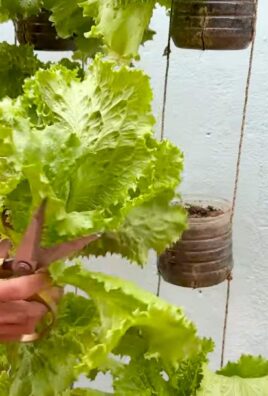
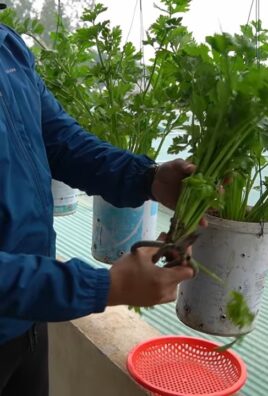
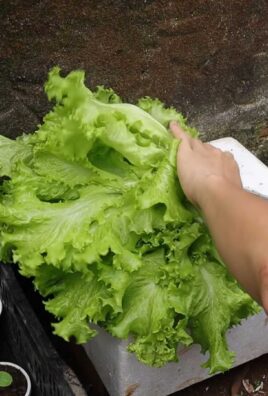
Leave a Comment